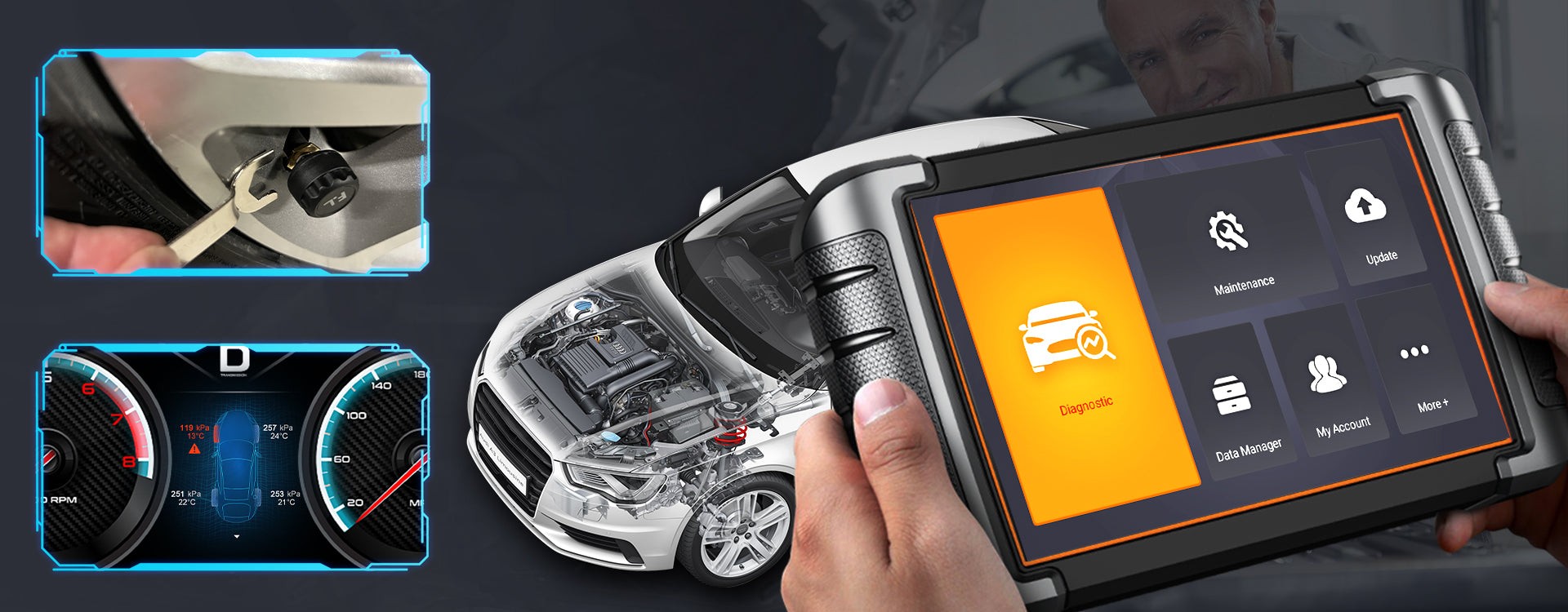Are you a car enthusiast looking to diagnose and fix your vehicle’s Supplemental Restraint System (SRS)? An Srs Obd2 Scanner can be an invaluable tool for understanding and resolving airbag system issues. This article will delve into the world of SRS OBD2 scanners, exploring their functionality, benefits, and how to choose the right one for your needs. We’ll also discuss common reasons your SRS light might illuminate and guide you through the reset process.
While a basic OBD2 scanner can read and clear engine and transmission codes, resetting the SRS module often requires a more specialized diagnostic tool. This is because the SRS system, responsible for deploying airbags and seatbelt pretensioners, demands a higher level of precision and safety.
Advanced SRS OBD2 scanners, like the FOXWELL NT809, offer comprehensive diagnostics for a wide range of vehicle systems, including ABS, SRS, and more. These tools provide access to critical information, enabling you to identify the root cause of SRS issues efficiently.
Understanding the SRS Module and its Importance
The SRS module acts as the control center for your vehicle’s airbag system. It constantly monitors a network of sensors, analyzing data to determine if a collision warrants airbag deployment. This intricate system relies on precise measurements and lightning-fast decision-making to ensure occupant safety in the event of an accident.
Definition and Purpose of the SRS
The Supplemental Restraint System (SRS) is designed to supplement seatbelts in protecting passengers during a crash. The SRS module receives data from impact sensors, analyzing factors like deceleration and impact angle to trigger airbag deployment when necessary. This complex process happens within milliseconds, highlighting the critical role of the SRS module in vehicle safety.
How the SRS Module Works
The SRS module continuously gathers data from various sensors located throughout the vehicle. These sensors detect sudden deceleration, impacts, and even seat positions. The module then processes this information to determine if a collision is severe enough to warrant airbag deployment. If the criteria are met, the module sends a signal to inflate the airbags, providing crucial protection for occupants.
Common Reasons for the SRS Light to Illuminate
The SRS warning light on your dashboard indicates a potential problem within the airbag system. Understanding the common causes of this warning light can help you troubleshoot the issue effectively.
Accidents and Impact Events
Even minor accidents can trigger the SRS light. While airbags may not deploy in a low-speed collision, the impact can still register with the SRS module, logging the event and illuminating the warning light.
Malfunctioning Sensors
Faulty sensors can disrupt the flow of accurate information to the SRS module. A malfunctioning sensor might send incorrect data or fail to send data altogether, triggering the SRS light and potentially compromising the system’s functionality.
Electrical Issues within the System
Electrical problems, such as corroded wires, short circuits, or a weak battery, can interfere with communication between the SRS module and its sensors. These issues can lead to the SRS light illuminating and require thorough diagnosis to pinpoint the source of the problem.
Utilizing an SRS OBD2 Scanner for Diagnostics and Resetting
A specialized SRS OBD2 scanner enables you to delve into the system’s error codes, providing detailed information about the specific issue. This information allows for targeted repairs and ensures the system is restored to full functionality.
Step-by-Step Guide to Resetting the SRS Module
- Diagnose the Problem: Before resetting, use the SRS OBD2 scanner to identify the underlying cause of the SRS light. This ensures you address the root issue, preventing the light from returning.
- Address the Underlying Issue: Based on the diagnostic findings, repair or replace any faulty components, such as sensors, wiring, or the SRS module itself.
- Connect the Scanner: Plug the SRS OBD2 scanner into the vehicle’s OBD2 port, typically located under the dashboard.
- Clear the Codes: Access the SRS system menu on the scanner and clear the existing error codes. This resets the SRS module and extinguishes the warning light if the issue has been resolved.
Choosing the Right SRS OBD2 Scanner
Investing in a high-quality SRS OBD2 scanner empowers you to maintain your vehicle’s safety systems effectively. When selecting a scanner, consider factors like vehicle compatibility, user interface, functionality, and software updates.
Conclusion
An SRS OBD2 scanner is a vital tool for diagnosing and resolving airbag system issues. By understanding how the SRS module works, recognizing common causes of warning lights, and utilizing a specialized scanner, you can ensure the proper functioning of your vehicle’s critical safety features. Remember to prioritize safety and consult a professional mechanic if you encounter complex problems or require assistance.
